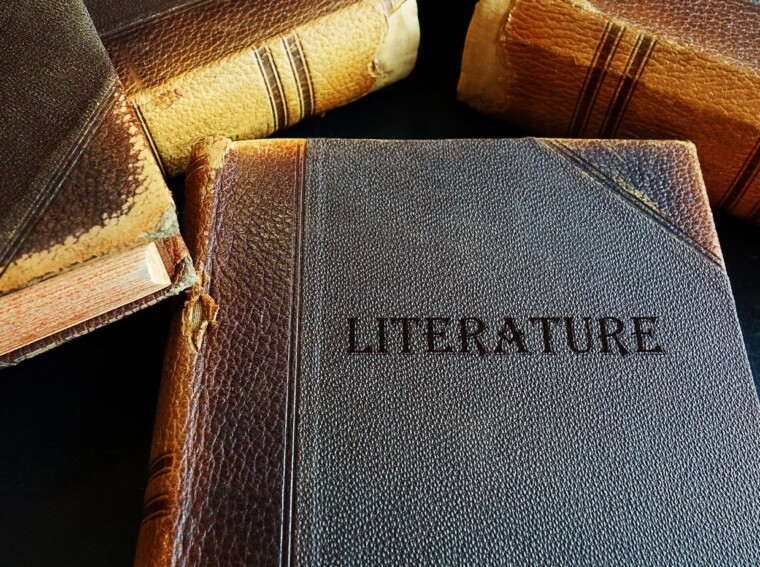Great literature often embraces ambiguity because it allows for multiple interpretations and invites readers to engage in deeper analysis. Ambiguity can be seen as a tool that challenges the reader’s assumptions and encourages them to think critically about the text. It creates a sense of intrigue and intellectual stimulation, making the reading experience more dynamic and thought-provoking.
When an author incorporates ambiguity into their writing, they create space for different perspectives and understandings. This open-endedness allows readers to bring their own experiences, beliefs, and biases into the interpretation of the text. It fosters a sense of active participation, as readers are encouraged to question, ponder, and debate various possible meanings.
Moreover, ambiguity in great literature reflects the complexity of human existence. Life itself is filled with uncertainties, contradictions, and unanswered questions. By mirroring this inherent ambiguity through their storytelling techniques, authors capture the essence of our shared human experience. They acknowledge that there are no easy answers or definitive truths but rather a multitude of possibilities waiting to be explored.
It May Be Said That Great Literature Embraces Ambiguity Because
When it comes to great literature, one could argue that its inherent beauty lies in its ability to embrace ambiguity. It may be said that ambiguity serves as a powerful tool for authors, allowing them to delve into complex themes and challenge readers’ perspectives. In this section, we’ll explore how great literature embraces ambiguity and why it’s such an integral part of the literary world.
Firstly, ambiguity adds depth and richness to a story. By presenting multiple interpretations or leaving certain elements open to interpretation, authors create a sense of intrigue and intellectual stimulation for readers. This allows individuals from diverse backgrounds to bring their own experiences and understanding to the text, fostering a more personal connection with the work.
Take, for example, Fyodor Dostoevsky’s masterpiece “Crime and Punishment.” The novel explores the psychological journey of its protagonist Raskolnikov after he commits murder. Throughout the narrative, Dostoevsky skillfully employs ambiguous language and moral dilemmas that force readers to grapple with questions about guilt, redemption, and human nature itself. By not providing clear-cut answers or judgments, Dostoevsky encourages readers to engage in deep introspection and contemplate their own beliefs.
Furthermore, embracing ambiguity allows great literature to reflect the complexities of real life. Human existence is rarely black and white; instead, it is marked by countless shades of gray. Literature that acknowledges this complexity resonates deeply with readers who seek stories that mirror their own experiences.

Exploring Multiple Interpretations In Classic Novels
When it comes to great literature, one can argue that ambiguity plays a significant role. It may be said that great literature embraces ambiguity because it allows readers to engage with the text on multiple levels and encourages them to ponder different interpretations. Classic novels, in particular, exemplify this aspect as they often present complex narratives and elusive themes that invite various readings.
In works like “Pride and Prejudice” by Jane Austen or “Moby-Dick” by Herman Melville, we find intricate characters and nuanced plotlines that lend themselves to diverse interpretations. The beauty of these novels lies in their ability to spark discussions among readers who bring their own perspectives and experiences into the mix. For example, some may view Elizabeth Bennet’s journey as a feminist triumph, while others might focus on the societal pressures she faces.
Moreover, classic novels frequently employ symbolism and metaphorical language which can be interpreted differently based on individual perceptions. Take F. Scott Fitzgerald’s “The Great Gatsby,” for instance. The green light at the end of Daisy Buchanan’s dock has been analyzed through various lenses: as a symbol of hope, unattainable dreams, or even wealth disparity.
The open-ended nature of great literary works enables readers to explore multiple interpretations without being confined to a single meaning prescribed by the author. This freedom fosters intellectual curiosity and encourages critical thinking skills. It allows us to delve deeper into the layers of these timeless stories and extract personal insights that resonate with our own lives.
In conclusion, it is undeniable that great literature embraces ambiguity because it invites readers to navigate through a maze of meanings and interpretations. Classic novels serve as prime examples of this phenomenon with their multifaceted characters, intricate plots, symbolic devices, and thought-provoking themes. By embracing ambiguity in literature, we not only expand our understanding but also celebrate the richness and diversity inherent in human experiences.

